Print ads are not for everyone. Most small businesses can produce cheap Black/White print ads in local magazines, papers and community publications but if you are looking to get into any national publications, even relatively smaller ‘tastemakers’ like Magnet magazine (and don’t even think about Rolling Stone or Spin, of course), you are likely going to pay at least $1000 per insertion for a 4/Color ad. Basic items you are going to have to consider to make your ad as effective as possible include:
Do Your Homework
With all things in marketing, the goal of ads is to reach folks that are going to be into what you are doing. When you research potential advertising matches, it’s a good idea to ask the ad rep a couple of really basic questions:
- What is your demographic?
- How much money do your readers spend on (insert your product or service here)?
- Where are you distributed?
- What is your circulation? (this will likely be an inflated number that includes free copies that are given out at events, but it is still a good starting point.)
- How many subscribers do you have? (a much better indication of the actual readers of the publication)
- Is the subscriptions paid or free?
All this stuff will help you get a better indication of not only the readership of 
Design and Messaging
Once you’ve decided on the outlet for your ad, you’ll need to develop your image and messaging. Unless you are a graphic artist with a lot of marketing experience and training, your print ad will be lost on folks that know nothing about you. There are several things to consider when developing the lay out of your artwork:
- Be clear in your messaging.
- What is the call to action?
- What do you want people to know/do?
Use images that make sense for the outlet. You may have a super hip design for an ad that might work in Juxtapose, but if you are advertising in a more conservative outlet, you should adjust your image accordingly.
Timing
The last thing you should keep in mind is the timing of your ad. The cover date and the actual date that publications hit the street are often different. Find out when the street date is (the date that the issue is at newsstands) and the date that subscribers will get the pub. This way you can make sure your messaging and timing makes perfect sense.
Print ads are an effective, affordable advertising medium you’ll usually find in magazines and newspapers. If you’re an ad agency copywriter, freelance copywriter or small business owner managing your own ad campaign, these elements show you how to write print ads that help you reach customers and get sales.
Call to Action
What should the customer do now? If you don’t tell them, they’ll just put your ad down and move on to something else. Tell them to call now, visit your website, receive a discount for ordering before a certain date, get a free trial or offer a gift with their order. You want to make your reader act now as opposed to whenever they get around to it, which is usually never without a solid call to action.
Contact Information
Do not forget your contact information. Don’t just include your website because that is where you want people to go. Put every bit of your contact information in all of your print ads. You want to give each customer every possible resource to get in touch with you. Don’t just assume everyone will want to visit your website or call you because they saw your number on the print ad.
Give the customer options so they’ll choose to contact you. Right now.
Readers are going to be scanning your ad at best, be sure that what you want folks to know is as obvious as possible. The design of the ad should be clean and not too copy heavy. It’s essential to realize that no one really reads ads, people just skim them.
Try to get a feel for the readers by taking a look at what other folks are doing. Not that you should design anything based on what you see exactly, but having an idea of what other folks are creating for art will help you to craft more effectively direct your language and images.














